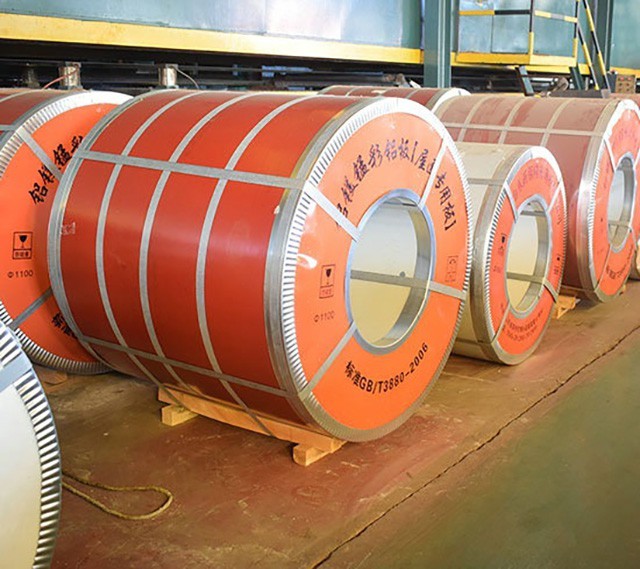Recently, with the rapid development of fields such as construction and transportation, the quality assessment of aluminum magnesium manganese plate, as a high-performance metal material, has received widespread attention from the industry. The evaluation of the quality of aluminum magnesium manganese plate supplier'factory is a comprehensive process that involves multiple factors. Here are some specific evaluation methods and standards:
1. Chemical composition analysis
Alloy element content: Aluminum magnesium manganese plate is mainly composed of aluminum, magnesium, manganese and other elements. Detect the percentage content of these elements through spectral analysis or chemical titration to ensure that the alloy ratio meets the design requirements. At the same time, attention should be paid to the control of impurity elements such as iron, silicon, and copper to avoid excessive impurities leading to a decrease in strength or corrosion resistance.
Compliance with standards: During testing, relevant standards such as GB/T 3190 "Chemical Composition of Aluminum and Aluminum Alloys" should be followed to ensure that the chemical composition is compliant.

2. Mechanical performance testing
Tensile strength: Test the maximum load-bearing capacity of the board under tension, ensuring that the board can withstand certain external forces without fracture. The testing standards can refer to GB/T 228.1.
Yield strength: Determine the critical stress value at which a material begins to undergo plastic deformation and evaluate the plastic deformation capacity of the sheet.
Elongation: Evaluate the ductility of materials and measure the deformation capacity of the sheet through tensile testing.
Hardness testing: Use a Brinell hardness tester or a Vickers hardness tester to measure the surface hardness of aluminum magnesium manganese plates. Hardness is an important parameter for measuring the quality of aluminum magnesium manganese plates. The hardness of different series of aluminum magnesium manganese plates varies, and users should choose the appropriate hardness according to their specific needs.
3. Physical performance evaluation
Surface flatness: Use a platform and a feeler gauge to check whether the surface of the board is flat and smooth, without obvious defects such as creases, oxide skin, black spots, etc. A board with good flatness is beneficial for installation and aesthetics.
Dimensional accuracy: Use gauges, calipers, and other tools to measure the length, width, thickness, and other dimensions of the board, ensuring that the dimensional error is within an acceptable range. The thickness of the board that meets the requirements of GB/T 3880 usually allows for an error of ± 0.1mm.
Bending degree detection: Use a dedicated bending degree measuring instrument to detect the bending performance of the board, ensuring that the board can meet the bending requirements during use.
4. Corrosion resistance test
Salt spray test: Conduct neutral salt spray test (NSS) according to GB/T 10125 standard, simulating corrosion resistance in marine or industrial environments. Record the time when corrosion spots appear and evaluate the protection level of the coating.
Acid and alkali resistance test: Soak the board in an acidic or alkaline solution with a specific pH value, observe surface changes, and evaluate its corrosion resistance.
5. Other performance tests
Drillability: Although the drillability of aluminum magnesium manganese plate is relatively weak, its drillability still needs to be considered in some application scenarios that require drilling processing.
Adhesion testing: For coated aluminum magnesium manganese plates, adhesion testing is required to evaluate the bonding strength between the coating and the substrate. The commonly used testing methods include grid crossing method or tensile test.
Color difference and glossiness detection: Use a colorimeter and glossiness meter to detect the color consistency and glossiness between batches of the board, ensuring its aesthetic appeal.
6. Quality Certification and Brand Considerations
Check certification: Check whether the aluminum magnesium manganese plate has passed relevant quality and environmental certifications, such as ISO certification, CE certification, etc. These certifications are powerful guarantees for product quality and environmental performance.
Brand selection: Choosing aluminum magnesium manganese plates produced by well-known brands usually provides better quality assurance and after-sales service. At the same time, understanding other users' evaluations and user experiences of the product can help to more comprehensively evaluate its quality.
In summary, evaluating the quality of aluminum magnesium manganese plates requires comprehensive consideration from multiple aspects such as chemical composition, mechanical properties, physical properties, corrosion resistance, other performance tests, as well as quality certification and branding. Through strict testing and evaluation, we can ensure the purchase of high-quality aluminum magnesium manganese sheet products.
 Language
▼
Language
▼
